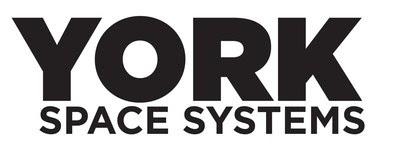Continuous Mission Series To Streamline Access To Space And Improve Collaboration With Industry Innovators
Denver-based York Space Systems has announced its Hydra Mission Series, slated for launch beginning later this year. The Hydra series leverages York Space Systems' fully qualified operational spacecraft design and standardized payload interfaces, as well as an enhanced production and integration facility for government and commercial manifested payload missions. Entry to orbit timelines for the Hydra series are as short as three months from delivery of customer hardware to York Space Systems' headquarters in Denver, Colorado.

The Hydra series of spacecraft allows space system providers to flight qualify their new designs for payloads, subsystems, or components for an unprecedented low cost and minimal wait time. Customers will simply deliver their payloads to York Space Systems who will manage everything from spacecraft integration, environmental testing, launch procurement, ground systems, mission operations, licensing and insurance. Customers can acquire the entire payload allocation for $3 million to orbit, with many securing a fraction of the available allocation for prorated amounts, as low as $300,000. Additionally, customers will receive completely confidential encrypted data from the Hydra series satellites on-orbit automatically. An added benefit to the program is the Hydra Flat-Sat software, a development tool that further streamlines payload integration and responsive access to space.
"York began with a strategic focus on enabling advanced space solutions that leverage standardization. Our customers are expanding the scope of innovation in our industry for both commercial and government use, and York remains committed to supporting their ambitions," said Melanie Preisser, vice president of National Systems at York Space Systems. "With this new Hydra mission series, we are looking to provide the next generation of space and space data entrepreneurs a very simple and low risk method to accelerate their concepts to reality and strengthen our nation's space infrastructure."
York Space Systems is currently seeking concepts that demonstrate the next generation of hybrid space architectures to further promote competition of ideas and collaboration among partners for a more resilient space ecosystem. The Hydra I mission is fully subscribed with multiple customers and is planned for launch December 2020. As each spacecraft in the series becomes subscribed, York Space Systems will continue to prep quarterly missions for launch. The company is currently in discussions for payloads for Hydra II, which will launch three months after Hydra I.
The reveal of the new Hydra Series follows the successful launch of York Space Systems spacecraft earlier this year and the news of its manufacturing facilities expansion in Denver. The company also recently opened an office in Washington D.C., further signifying York Space Systems growth and momentum in the sector.
(Source: York Space Systems news release)
 ANN's Daily Aero-Linx (05.02.24)
ANN's Daily Aero-Linx (05.02.24) ANN's Daily Aero-Term (05.02.24): Touchdown Zone Lighting
ANN's Daily Aero-Term (05.02.24): Touchdown Zone Lighting Aero-News: Quote of the Day (05.02.24)
Aero-News: Quote of the Day (05.02.24) ANN FAQ: Contributing To Aero-TV
ANN FAQ: Contributing To Aero-TV NTSB Final Report: Cirrus Design Corp SR20
NTSB Final Report: Cirrus Design Corp SR20



